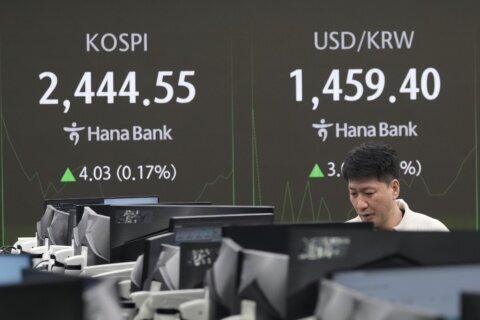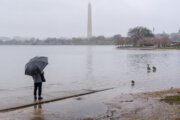MELBOURNE, Australia (AP) — Australia has protested to Beijing through multiple channels that a Chinese fighter jet endangered an Australian navy helicopter with flares over international waters, the prime minister said Tuesday.
Beijing retorted that the Australian aircraft deliberately flew close to China’s airspace in a “provocative move” and had to be warned off.
The incident occurred Saturday as the Australian air warfare destroyer HMAS Hobart was enforcing U.N. Security Council sanctions against North Korea in international waters in the Yellow Sea, Australian officials said Monday. There were no injuries or damage reported.
Prime Minister Anthony Albanese said the Australian public expected an explanation from China.
“We’ve just made it very clear to China that this is unprofessional and that it’s unacceptable,” Albanese told Nine Network television.
“We’ve made it very clear … through all of our channels, at all measures at our disposal, including here publicly,” Albanese said.
A Chinese Foreign Ministry spokesperson said at a regular briefing Tuesday that China lodged an official protest with Australia over its military’s “risky moves.”
“What truly happened is an Australian military aircraft deliberately flew within close rage of China’s airspace in a provocative move that endangers China’s maritime and air security in the name of enforcing a U.N. Security Council resolution,” spokesperson Lin Jian said.
“The Chinese military took necessary measures at the scene to warn and alert the Australian side,” he added.
Lin said China urged Australia to stop its “provocations” to prevent “misunderstanding and miscalculation.”
Albanese said it was important for Australian officials to speak out when such events occur.
“It’s important that we make clear our position, which has been done at the diplomatic levels, at government-to-government, but also defense-to-defense as well. And all of those avenues have been made clear. This issue, we have made public in order to be able to speak out very clearly and unequivocally that this behavior is unacceptable,” the prime minister said.
Defense Minister Richard Marles said Monday that a Chinese Chengdu J-10 fighter jet released flares in the flight path of an Australian navy Seahawk helicopter deployed from the Hobart.
He said the flares were 300 meters (986 feet) in front of the helicopter and 60 meters (197 feet) above it and the helicopter pilot had to “take evasive action in order to not be hit by those flares.”
“The consequence of being hit by the flares would have been significant,” Marles said.
“We will not be deterred from engaging in lawful activities and activities which are there to enforce U.N. sanctions in respect of North Korea,” Marles added.
It was the most serious encounter between the two nations’ forces since Australia accused the Chinese destroyer CNS Ningbo of injuring Australian navy divers with sonar pulses in Japanese waters in November. Australia said China disregarded a safety warning to keep away from the Australian frigate HMAS Toowoomba.
China maintains that encounter happened outside Japanese territorial waters and that the Chinese warship caused no harm.
Albanese said the encounter would be raised with Chinese Premier Li Qiang when he visits Australia next month.
Albanese referred to the period since 2020 when China ended minister-to-minister discussions with the previous Australian government which lost power at elections in 2022.
“One of the things that had broken down over a period of time was any dialogue. Dialogue is important. It’s always, always important to have avenues of communication,” Albanese told reporters.
During a visit to China earlier in November, Albanese invited Chinese President Xi Jinping to visit Australia for the first time in a decade as bilateral relations have improved in recent years from unprecedented lows. He said Tuesday that Xi would not visit Australia this year.
But Albanese said he expected to have “some face-to-face engagement” with the Chinese leader when they both attend G20 and APEC summits late this year.
Australian National University expert on the navy and former naval officer Jennifer Parker described the Chinese use of flares as “incredibly dangerous.”
“If the helicopter had ingested one of the flares into its engine, it could’ve shut down the engines of the helicopter and we could have seen the helicopter need to ditch with potential injuries or loss of life,” Parker told Australian Broadcasting Corp.
“So this isn’t normal by any stretch of the imagination,” Parker added. “Impeding its flight path I would interpret as a breach of international law.
___
Associated Press writer Simina Mistreanu in Taipei, Taiwan, and video producer Olivia Zhang in Beijing contributed to this report.
Copyright © 2024 The Associated Press. All rights reserved. This material may not be published, broadcast, written or redistributed.






